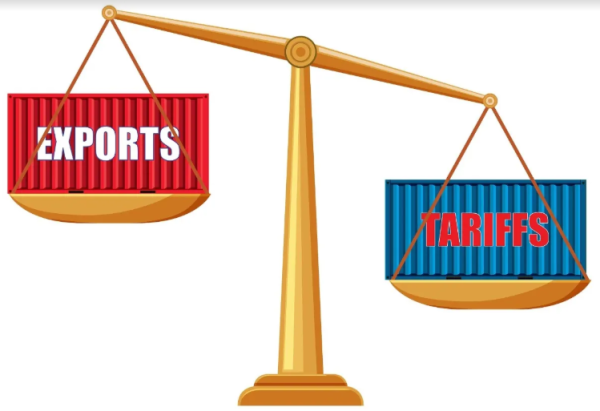The Interconnected Collapse of Silicon Valley Bank and Signature Bank

An office of the recently-collapsed Silicon Valley Bank. Credit: Rebecca Noble/AFP via Getty Images
April 11, 2023
SVB Collapses:
Shadows of 2008 have come to haunt the US economy. Weeks ago, the Silicon Valley Bank experienced a rapid bank run, as its depositors rushed to withdraw their money, causing the bank to collapse in just 48 hours. The contagious panic, in addition to creating ripples in the tech industry, felled Signature Bank as well.
The Silicon Valley Bank (SVB), was a patron of technology startups around the world, and funded the growth of the technology industry from the US to China. In 2021, the value of their deposits doubled, but the number of borrowers did not grow at the same rate. The bank was left with extra money that they could not lend. The bank’s investors expect to receive a share of the bank’s profits in return for their investment. Normally, they would expect the bank to use the money from deposits and loan it out, profiting from the higher interest rates on the bank’s loans. However, when there is too much money from deposits and not enough entities to which the bank can lend money, the investors may be disappointed by the bank’s inability to profit from its extra money (and therefore return money to them).
For this reason, SVB decided to place its money somewhere where it would make them profit, preferably without much risk. They decided to buy extremely safe securities from the U.S. Treasury. In exchange for the money, the Treasury promises to pay back its debt with a small interest rate over a certain period of time.
This is not the only way for the security-holder to profit; instead of collecting the interest until maturity, the holder may sell their securities to another entity. If the federal interest rate has decreased since the security was purchased, then all of the other available securities will offer lower interest rates. The current holder can sell their security for a profit, since other potential investors will be willing to buy a more valuable security for more money. Ultimately, the original entity that bought the security from the Treasury may profit more than if it waited for the government to pay all the interest.
However, this scenario relies entirely on the interest rates decreasing. Instead, the Federal Reserve began to increase interest rates in March of 2022 to discourage the borrowing of money and stop inflation. Currently available securities have higher interest rates than they did before, so they are more valuable. No entity will buy less valuable securities from the bank unless the bank decreases the price, causing it to lose money. The bank could have waited for the Treasury to pay off the security in the conventional way if not for a separate issue that occurred early in 2023: customers (such as technology startups) rushing to withdraw money to help with their own financial problems (such as a lack of funding from venture capitalists due to the same rising interest rates).
To pay the customers their deposits back, the bank needed to raise money immediately. With no time to wait for the securities to reach maturity, the bank decided to sell $21 billion in securities, losing $1.8 billion in the process. The bank then attempted to raise more money to recover from their losses by selling shares of their stock; this desperate move convinced even more customers to lose confidence. In many banks, the Federal Deposit Insurance Corporation (FDIC) would insure $250,000 per depositor, so many people would not have to worry if the bank collapsed. In SVB, 88% of depositors had put more than $250,000 into the bank. Worried that their uninsured money would be lost, they withdrew their money. The bank’s stock fell in value, and SVB collapsed on March 10, after a bank run lasting just 48 hours.
Signature Bank Collapses:
Seeing the collapse of SVB, the customers of Signature Bank, too, lost confidence, and caused that bank to fall as well on March 12. Signature Bank had also done business with cryptocurrency exchanges, but when the fraud-ridden cryptocurrency exchange company FTX collapsed, the entire industry became more unstable and fraught with paranoia. Another crypto-friendly bank, Silvergate Bank, failed just a few days before SVB. This may have also contributed to the collapse of Signature Bank.
A few days after the collapses, government regulators testified before the Senate about the events. The Vice Chair of Supervision of the Federal Reserve, Michael Barr, called the collapse of SVB “a textbook case of bank mismanagement.” The regulators argued that the bank had not responded quickly enough to the growth of their deposits. Some senators concluded that although the regulators had warned the bank back in 2021 of the risks they were taking, they bore some responsibility because they did not actually force the bank to take action.
SVB is now being partly purchased by First Citizens Bank, while Signature Bank is being partly purchased by New York Community Bancorp. For the time being, the FDIC has guaranteed that depositors in both banks will not lose their money, even if it exceeds the $250,000 limit.
The crisis raises important questions about whether post-2008 bank regulations are sufficient to prevent further collapses, and whether the bank executives should be punished for their alleged irresponsibility. Now that the chaos has mostly subsided, startups, regulators, lawmakers, and banks must all rethink their strategies so they can avoid repeating the situations of the two ill-fated banks.
References:
- Chittenden, William. “Silicon Valley Bank biggest US lender to fail since 2008 financial crisis – a finance expert explains the impact.” The Conversation, 10 March 2023, https://theconversation.com/silicon-valley-bank-biggest-us-lender-to-fail-since-2008-financial-crisis-a-finance-expert-explains-the-impact-201626. Accessed 2 April 2023.
- Choi, Candice. “The Banking Crisis: A Timeline of Silicon Valley Bank’s Collapse and Other Key Events.” The Wall Street Journal, 27 March 2023, https://www.wsj.com/articles/bank-collapse-crisis-timeline-724f6458. Accessed 2 April 2023.
- French, David, et al. “SVB is largest bank failure since 2008 financial crisis.” Reuters, 11 March 2023, https://www.reuters.com/business/finance/global-markets-banks-wrapup-1-2023-03-10/. Accessed 2 April 2023.
- Horsley, Scott. “5 takeaways from the Senate hearing on Silicon Valley Bank’s failure.” NPR, 28 March 2023, https://www.npr.org/2023/03/28/1166507714/senate-hearing-silicon-valley-bank-signature-bank-failure-collapse. Accessed 2 April 2023.
- Kharpal, Arjun. “SVB’s failure will have a ripple effect across technology for years.” CNBC, 14 March 2023, https://www.cnbc.com/2023/03/15/svbs-failure-will-have-a-ripple-effect-across-technology-for-years.html. Accessed 2 April 2023.
- Lioudis, Nick, and Somer Anderson. “Inverse Relation Between Interest Rates and Bond Prices.” Investopedia, 28 March 2023, https://www.investopedia.com/ask/answers/why-interest-rates-have-inverse-relationship-bond-prices/. Accessed 2 April 2023.
- Mascaro, Lisa, et al. “How Washington came to rescue US banks.” AP News, 14 March 2023, https://apnews.com/article/silicon-valley-bank-failure-deposits-fdic-8011ea377d8f9941032790ce1d704c5a. Accessed 2 April 2023.
- Son, Hugh, et al. “Silicon Valley Bank collapse: How it happened.” CNBC, 10 March 2023, https://www.cnbc.com/2023/03/10/silicon-valley-bank-collapse-how-it-happened.html. Accessed 2 April 2023.
- Tennekoon, Vidhura S. “Analysis: Why Silicon Valley Bank and Signature Bank failed so fast.” PBS, 14 March 2023, https://www.pbs.org/newshour/economy/why-silicon-valley-bank-and-signature-bank-failed-so-fast. Accessed 2 April 2023.









